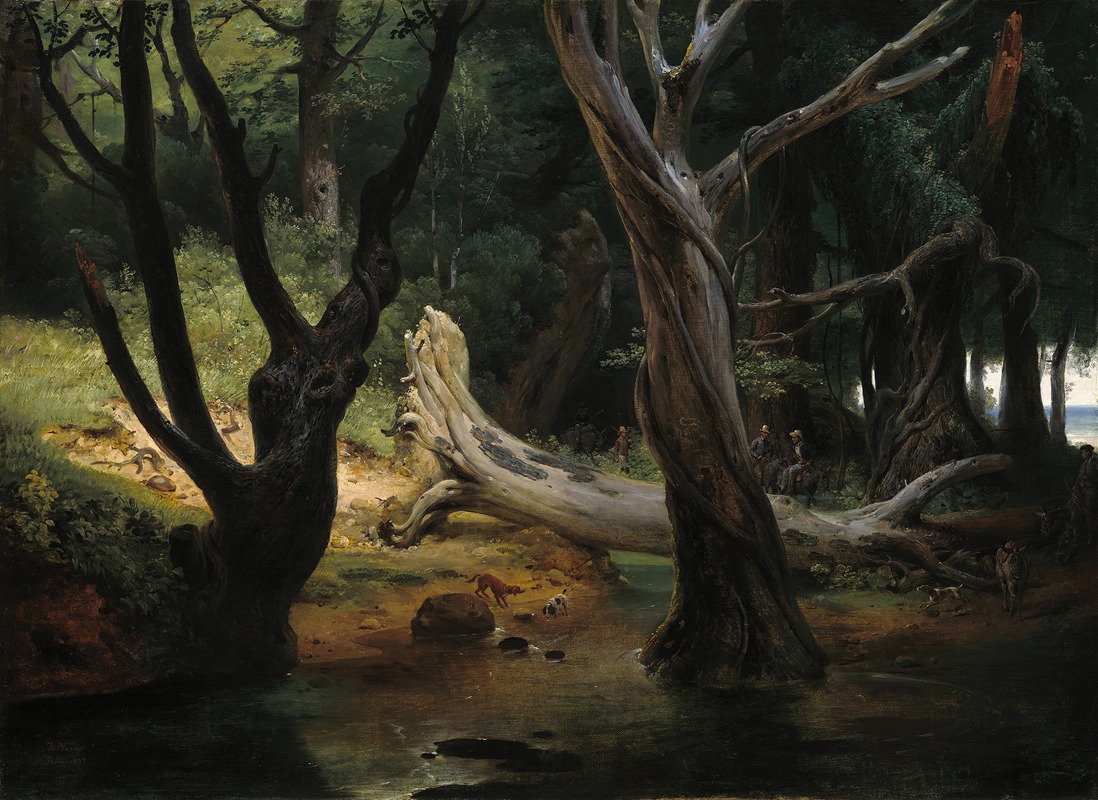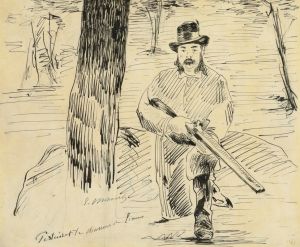
Departure for the Hunt in the Pontine Marshes
A hand-painted replica of Horace Vernet’s masterpiece Departure for the Hunt in the Pontine Marshes, meticulously crafted by professional artists to capture the true essence of the original. Each piece is created with museum-quality canvas and rare mineral pigments, carefully painted by experienced artists with delicate brushstrokes and rich, layered colors to perfectly recreate the texture of the original artwork. Unlike machine-printed reproductions, this hand-painted version brings the painting to life, infused with the artist’s emotions and skill in every stroke. Whether for personal collection or home decoration, it instantly elevates the artistic atmosphere of any space.
"Departure for the Hunt in the Pontine Marshes" is a painting by the French artist Horace Vernet, completed in 1833. Vernet, known for his dynamic compositions and vivid portrayal of historical and contemporary scenes, was a prominent figure in 19th-century French art. He was particularly celebrated for his military and equestrian subjects, which often depicted the heroism and drama of battle.
This particular painting, "Departure for the Hunt in the Pontine Marshes," captures a moment of leisure rather than conflict. The Pontine Marshes, located southeast of Rome, were a well-known region in Italy, notorious for their challenging terrain and the prevalence of malaria. Despite these difficulties, the marshes were a popular hunting ground for the European elite during the 19th century, offering a rich variety of wildlife.
In Vernet's painting, the scene is set against the backdrop of the expansive and somewhat foreboding landscape of the marshes. The composition typically includes a group of hunters, likely aristocrats or nobility, preparing for their expedition. The figures are often depicted in elaborate hunting attire, reflecting the fashion and social status of the period. Vernet's attention to detail is evident in the rendering of the costumes, the equipment, and the horses, which are portrayed with anatomical precision and dynamic poses.
The painting is characterized by Vernet's skillful use of light and shadow, which adds depth and drama to the scene. The natural light of the marshes is captured with a keen eye, highlighting the textures of the landscape and the figures. Vernet's palette is often rich and varied, with earthy tones dominating the scene, punctuated by the vibrant colors of the hunters' attire.
Vernet's work is notable for its narrative quality, and "Departure for the Hunt in the Pontine Marshes" is no exception. The painting invites viewers to imagine the anticipation and excitement of the hunt, as well as the camaraderie among the participants. The artist's ability to convey movement and emotion through his brushwork is a testament to his mastery of the medium.
This painting is part of Vernet's broader oeuvre, which often explored themes of adventure and exploration. His works were well-received in his time, earning him commissions from various European courts and solidifying his reputation as a leading artist of his era. "Departure for the Hunt in the Pontine Marshes" exemplifies Vernet's ability to capture the spirit of an age, blending historical accuracy with artistic flair.
Today, Vernet's paintings, including this one, are appreciated for their historical significance and artistic merit. They offer a window into the past, reflecting the cultural and social dynamics of 19th-century Europe. "Departure for the Hunt in the Pontine Marshes" remains a notable example of Vernet's work, celebrated for its composition, detail, and the evocative portrayal of a bygone era.


















